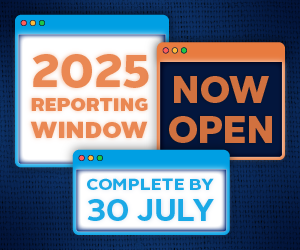Investors may increasingly see terms such as ‘system-level investing’, ‘system stewardship’ and ‘transformation finance’. What do they mean? Does this approach deviate from ESG integration? Where and how do PRI work programmes connect to these ideas?
Defining system-level investing
System-level investing explicitly focuses on how relationships within and between systems – financial, economic, environmental, social and political – impact investment risks and returns. By adopting this approach, investors centre the belief that portfolios are more strongly influenced by systemic and systematic factors and externalities versus risk and return to each individual investee – an idea raised by Jon Lukomnik and James P Hawley in their seminal 2021 publication, Moving Beyond Modern Portfolio Theory: Investing That Matters.
The key terms used in system-level investing are:
- System-level risks are non-diversifiable risks. They include:
- Systematic risk: transmitted through financial markets and economies and that cannot be mitigated through diversification. Also referred to as ‘market risk’ (e.g., inflation, recession).
- Systemic risk: leads to a cascading set of consequences resulting in the destabilisation and eventual collapse of a system (e.g., the collapse of the financial system due to destabilised asset prices, or the collapse of planetary living systems due to a rise in GHG emissions).
- System-level influence or systemic impacts can affect entire systems or individual entities, interconnected relationships, structures and mechanisms.
- Causal relationships or feedback loops refer to cyclical processes where outputs from one system or one part of a system feed into and influence the behaviour of the overall system. Feedback loops can be positive (reinforcing the phenomena) or negative (weakening or diluting the strength of the phenomena).1
System-level investing: an evolution of ESG and Modern Portfolio Theory
System-level investing can be seen as an evolution of traditional ESG integration.
Conventionally, ESG integration has often focused on managing risk and opportunities at the level of individual assets and investees to optimise risk-adjusted returns. However, in the roughly two decades since its inception, proponents of ESG integration have been challenged to better explain how investee or portfolio-level ESG performance amounts to improvements in the economy or system upon which returns rely.
System-level investing tools and models seek to respond to this challenge by considering those causal relationships or feedback loops through which negative externalities are mitigated and positive externalities are reinforced.
This approach also addresses the insufficiency of Modern Portfolio Theory by explaining the relationship between investment decision-making and system-level risks and considering the time horizons across which the effects of such risks are realised. System-level investors recognise investee or portfolio-level risks (traditionally ‘alpha’ factors) as intricately linked to systemic risks or ‘market risks’, (traditionally ‘beta’ factors), and seek to tailor their investment and stewardship strategies alongside appropriate time horizons.
Approaches to system-level investing
There are a variety of ways that investors choose to integrate system-level thinking. Two of the most common ways are:
- System-level investment practices: Whereby investors develop and apply investment models and strategies that merge traditional analysis of investee or portfolio-level risk with analysis of impacts of systemic and systematic risks. For example:
- The Investment Integration Project’s System Aware Investing Launchpad provides investors with tools to implement a system-level approach in areas such as asset allocation and manager selection.
- The Predistribution Initiative (PDI) and The Responsible Asset Allocator Initiative (RAAI) conduct programming for asset owners and allocators to adjust their financial benchmarking practices for system-level investing.
- The Institute of Energy Economics and Financial Analysis developed a test case for a ‘systemically adjusted’ investment model that aims to empirically value assets in the context of systemic risks with Norway’s sovereign wealth fund.
-
System stewardship: Focuses on interconnections in the investment ecosystem and prioritises activities that can achieve system-level impacts, including engagement and voting practices.
For example, the Investor Action on Anti-Microbial Resistance initiative, which aims to combat the spread of drug-resistant superbugs, mobilised investors including Amundi, Legal & General Investment Management, Australian Super and HESTA to file shareholder resolutions on the issue of antibiotic use in the supply chain of multinational companies.
Key organisations and initiatives
There are a diverse and growing set of system-level investing and related initiatives, models, and training platforms that some PRI signatories are independently or collaboratively involved in. Aside from those mentioned above, we also note the pertinent work of The Shareholder Commons, The Thinking Ahead Institute, Transformation Capital and The School of System Change in Finance, run jointly by Aviva Investors, Forum for the Future and School for System Change.
Groups such as Impact Management Platform, Impact Frontiers, the Global Impact Investing Network, and the Sustainable Investing Research Initiative (Columbia University) also support investors to develop tools and practices to address the challenges of systems-level risks.
System-level investing at the PRI
We advance the development of system-level investing approaches through several programmes as noted in the table below.
|
Thought leadership and guidance |
Active Ownership 2.0: Our flagship stewardship framework supports investors who seek real-world outcomes, prioritise systemic sustainability issues, and use collaboration as an integral tool to overcome the collective action problem. |
|
Initiatives |
Advance is a PRI-led collaborative initiative where institutional investors aim to protect and enhance risk-adjusted returns by advancing progress on human rights through investor stewardship. The initiative recognises that investee companies protecting human rights is related to securing the societal infrastructure upon which the global economy relies. |
|
Climate Action 100+ is an investor-led initiative to ensure the world’s largest corporate greenhouse gas emitters take appropriate action on climate change to mitigate financial risk and to maximise the long-term value of assets. |
|
|
Spring is a PRI-led collaboration focused on the systemic risk of biodiversity loss to societies and long-term portfolio value creation by engaging with companies on practices related to forest loss and land degradation. |
|
|
Policy |
The Legal Framework for Impact (LFI) report offers an analysis of legal jurisdictions around the world and the extent to which they support investors’ efforts in pursuing sustainability impact goals where they would contribute to their financial objectives. Specifically, system-level investing aligns with the definition of ‘instrumental IFSI’, whereby achieving the relevant sustainability impact goal is instrumental in realising the investor’s financial return objective. |
|
The next update to the PRI Sustainable Finance Policy Toolkit will include guidance for financial authorities on implementing policies and regulations for addressing exposure to sustainability-related risks, tackling drivers of sustainability-related risks, and supporting the economy-wide transition. |
|
|
Frameworks |
The Pathways framework currently in development at the PRI delineates between different approaches to responsible investment. Pathway B closely aligns with (and will seek to draw from) many of the approaches summarised above, focusing on mitigating risks and achieving systems-level outcomes. This is contrasted with traditional ESG incorporation (Pathway A), and investors pursuing impact goals (which may or may not be systems-oriented) (Pathway C). |
In 2025 we will continue to support knowledge-building and develop our work programmes in relation to system-level investing.
We encourage signatories to explore how the insights produced by the above groups can support your own journey in responsible investment.
To share your views on this area of work, please contact Nithya Iyer in the Sustainable Financial System team by emailing [email protected]
Further resources
- Burckart, William and Lydenberg, Steve, Berrett-Koehler Publishers (April 13, 2021), 21st Century Investing: Redirecting Financial Strategies to Drive Systems Change
- Burkart, William, Eng, Melissa and Suki, Lenora, The Investment Integration Project (2023), (Re)Calibrating Feedback Loops: Guidance for Asset Owners and Institutional Investors Assessing the Influence of System-level Investing
- Burkett, Ingrid and Hannant, Alex and McNeill, Joanne, Griffith University and Hatched (2022), Design Foundations for Systems Capital
- Hand, Dean and Gilbert, Sean, Global Impact Investing Network (2023), Holistic Portfolio Construction with an Impact Lens: A Vital Approach for Institutional Asset Owners in a Changing World
- Hawley, Jim, Lukomnik, Jon, Seattle University School of Law Digital Commons, REV 449 (2018), The Long and Short of It: Are We Asking the Right Questions? Modern Portfolio Theory and Time Horizons
- Hofstetter, Dominic, Climate KIC (2020), Transformation Capital: Systemic Investing for Sustainability
- Impact Management Platform (2023), The Imperative for Impact Management: Clarifying the relationship between impacts, system-wide risk and materiality
- Lydenberg, Steve, The Investment Integration Project (2015), Portfolios and Systemic Framework Integration: Towards a Theory and Practice
- Rothenberg, Delilah and Chappe, Raphaele and Feldman, Amanda, SSRN (2021), ESG 2.0: Measuring & Managing Investor Risks Beyond the Enterprise-level
- Thinking Ahead Institute (2023), Systemic risk: deepening our understanding












